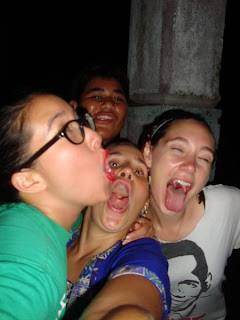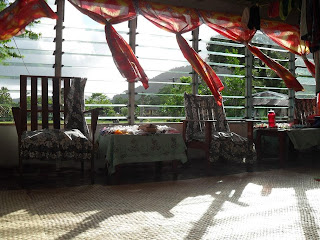
The day had finally arrived when training was finally over and we were going to officially swear in as Peace Corps Volunteer. As usual, the night before we left, the village threw a fiafia (party,) and as one might expect, all the Americans provided the entertainment with Samoan song and dance. I mean, why wouldn't we? If I were to choose a group best suited to sing and dance without retraint or self-consciousness, I would definetely choose the Americans. 





On the morning of our departure the village performed a formal farewell address, which included the presentation and gift of a wildebeest-sized pig, baskets of taro, fish, corned beef, etc. In return we gave them money and the pleasure of living without 20 culturally insensitive Americans and the inconvenience of having to serve them a *special diet 3 times a day.





In all seriousness, Manunu was the first village and the first family that birthed us into the Samoan culture and for that I am grateful. These past two months was truly a time of experiential learning. I will miss many things about Manunu but on the same token, many more adventures and other challenges lie ahead. So, farewell, Manunu. Thankyou for your patience and your love. It is now time for me to move forward and finally begin the work I set out to do in the first place.



*Special diet = vegetables. Vegetables are pretty much nonexistent in the Samoan diet.





































